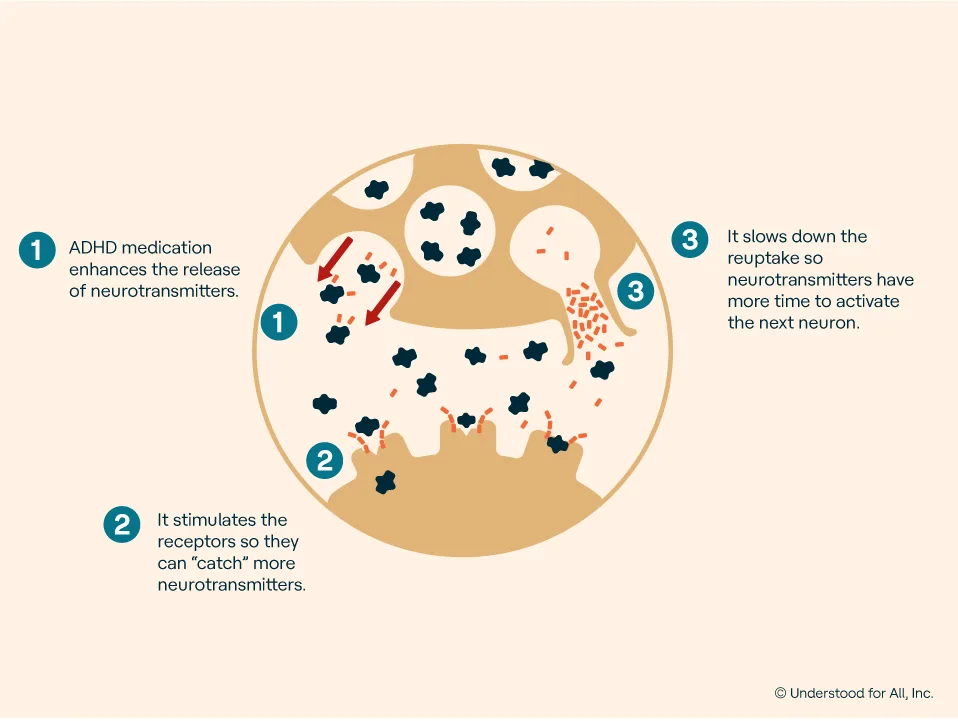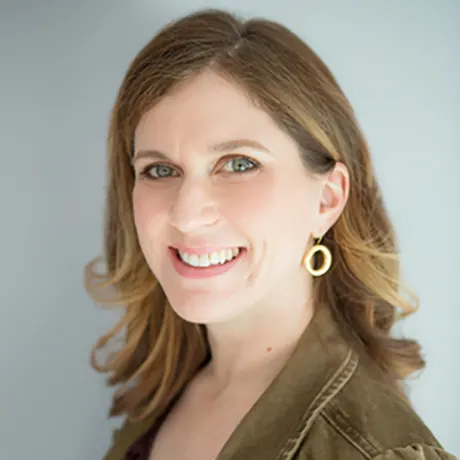How ADHD medication works

At a glance
Medication can reduce ADHD symptoms, but it doesn’t “cure” ADHD.
ADHD medication can help parts of the brain pass along messages to other parts.
The medication only works while it’s active in the body.
How does ADHD medication work? Why do stimulants and other kinds of ADHD medication help reduce ADHD symptoms?
Learn how ADHD medication works in the brain.
How ADHD affects a key process in the brain
For the brain to do anything, like smell a flower or spell a word, neurons (brain cells) have to pass information along to each other. This process is called neurotransmission.
How does one neuron send a message to the next? The tail end of the sending neuron releases a small amount of chemicals called neurotransmitters. These chemicals have to cross a tiny gap — called a synapse — to reach the tip of the receiving neuron.

With ADHD, this process can get disrupted in different ways:
The sending neuron may not release enough neurotransmitters.
The neurotransmitters may have trouble activating the landing pads (receptors) on the receiving neuron.
The sending neuron may suck the neurotransmitters back up before a good connection is made.
All sending neurons need to vacuum up extra neurotransmitters so they can get ready to send another signal. This process is called reuptake. But it can happen too quickly with ADHD, before the receiving neuron gets the message.
How ADHD medication works
Trouble passing information from neuron to neuron can affect attention. It can impact motivation, too. It also helps explain other ADHD symptoms like being restless and impulsive.
Medication can reduce ADHD symptoms. It does this by helping neurons pass along messages. It can make neurotransmission more efficient in one or more ways.

Some types of ADHD medication help release more neurotransmitters. Other types help slow down reuptake — they’re called reuptake inhibitors. Both of these actions can help more neurotransmitters reach the next neuron.
By improving neurotransmission, ADHD medication can reduce hyperactivity. It can help people pay attention. And that can help them process and learn new information.
ADHD medication works in about eight out of 10 people who have ADHD. But it’s not a “cure” for ADHD. It can reduce symptoms only while it’s active in the body.
Not all people respond equally well to different types of ADHD medication. It’s not uncommon to switch from one medication to another. All types of ADHD medication can cause side effects. Two of the most common are decreased appetite and trouble sleeping.
Learn about other ADHD treatment options. And get tips to help with ADHD at home.
Understood is not affiliated with any pharmaceutical company.
Key takeaways
Trouble passing messages from neuron to neuron can affect attention.
ADHD medication can help the brain’s neurons “talk” to one another.
Different ADHD medications work for different people.


